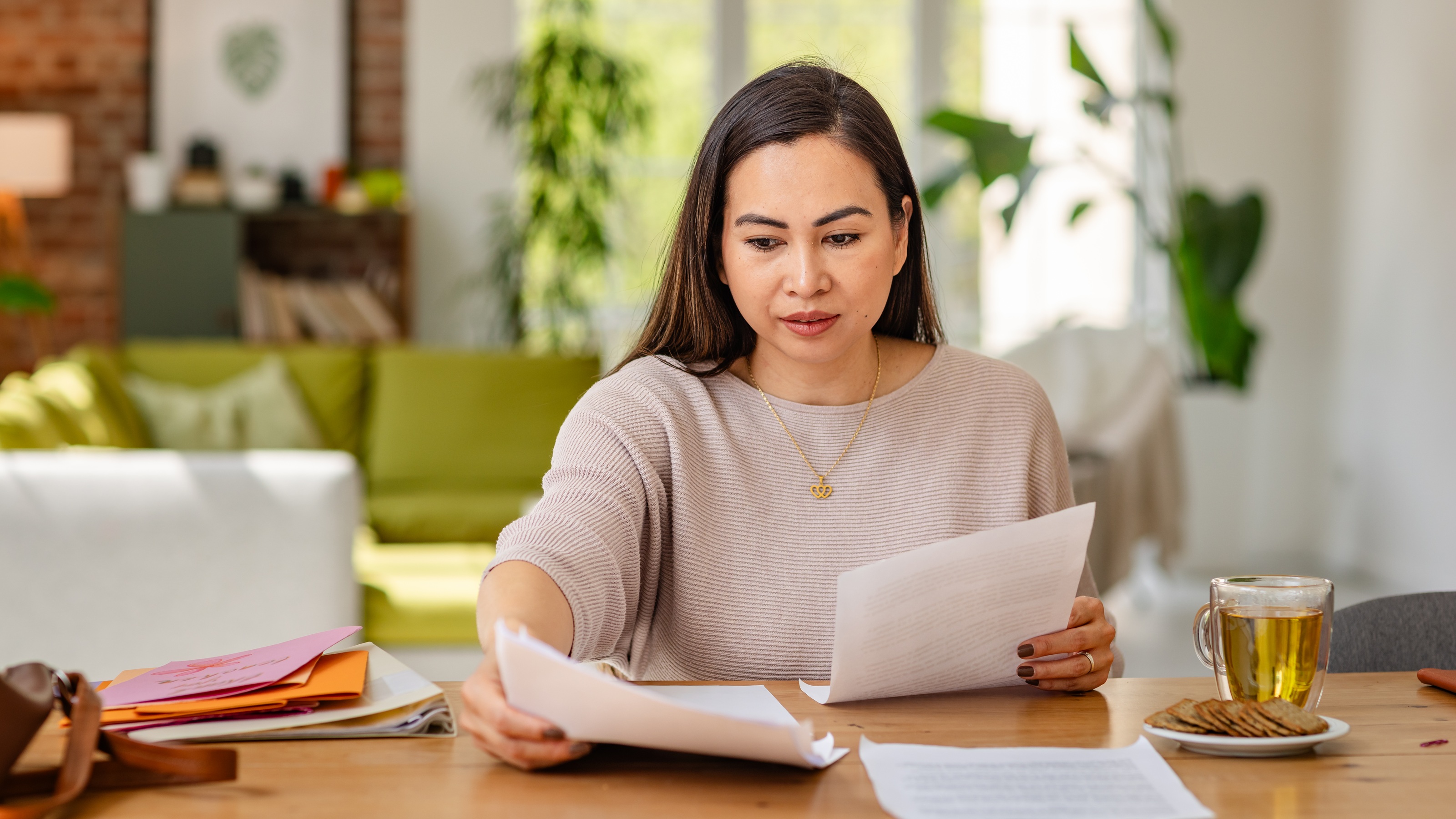CPI Report Points to Gradual Pace for Rate Cuts: What the Experts Are Saying
Inflation surprised to the upside last month but the disinflation trend remains on track.


A slightly hotter-than-expected September CPI report keeps the Federal Reserve on track to cut interest rates at a gradual pace as the broader disinflation trend seen in the U.S. economy remains on track, experts say.
Although headline inflation fell for a sixth consecutive month in September to hit its lowest level since early 2021, the reading topped economists' expectations due to stickiness in some of the Consumer Price Index's subcomponents.
For the record, annual CPI slowed to 2.4% in September from 2.5% the prior month, according to the Bureau of Labor Statistics. That exceeded economists' forecast for a 2.3% rise in inflation. More importantly, core CPI, which excludes volatile food and energy costs and is considered to be a better indicator of future prices, rose 0.3%. That topped expectations for a 0.2% increase.
From just $107.88 $24.99 for Kiplinger Personal Finance
Become a smarter, better informed investor. Subscribe from just $107.88 $24.99, plus get up to 4 Special Issues

Sign up for Kiplinger’s Free Newsletters
Profit and prosper with the best of expert advice on investing, taxes, retirement, personal finance and more - straight to your e-mail.
Profit and prosper with the best of expert advice - straight to your e-mail.
The drop in annual inflation was helped by falling energy prices, while core inflation edged up due mostly to sticky costs for shelter, notes Jim Baird, chief investment officer with Plante Moran Financial Advisors.
"At 2.4%, headline inflation isn't terribly worrisome," Baird writes, "particularly since it's been running at an even cooler rate well below 2% annualized over the last six months – a pace that would alone suggest that the Fed's war on inflation has likely been won. If anything, the report was good enough to solidify the case for another quarter-point interest rate cut."
Although inflation hasn't receded rapidly enough to justify an accelerated pace of policy easing, today's upside surprise "doesn't raise serious questions about the underlying disinflationary trend," adds Baird.
A blowout September jobs report already had market participants frantically recalibrating their bets on how fast the Federal Reserve will normalize borrowing costs. The latest CPI report, while coming in hot, only appeared to affirm expectations for a cut of 25 basis points (bps), or 0.25%, at the next Fed meeting.
As of October 10, futures traders assigned an 89% probability to the Federal Open Market Committee (FOMC) reducing the short-term federal funds rate by 25 basis points in November, up from 68% a week ago. Odds of a 50 basis point cut dropped to 0% from 32% last week, according to CME Group's FedWatch Tool, while chances of the Fed standing pat rose to 11% from 0% a week ago.
With the September CPI report now a matter of record, we turned to economists, strategists and other experts for their thoughts on what the data means for markets, macroeconomics and monetary policy going forward. Please see a selection of their commentary, sometimes edited for brevity or clarity, below.
Expert takes on the CPI report

"CPI Inflation data was slightly on the hotter side, with commodity prices (outside) energy rising more than expected. The good news is that shelter inflation is pulling back and that’s going to pull inflation lower. The big picture is inflation continues to pull lower, albeit with some bumps along the way." – Sonu Varghese, global macro strategist at Carson Group
"The September CPI report came in a little hotter than expected, but nothing that we think will disrupt the Fed's plans to cut 25 basis points in February. The relative strength of recent economic data suggests that the Fed may move less, or more slowly, in normalizing interest rate policy. However, it still believes it is restrictive and wants to preserve the delicate balance between an economy that is working well and one that would unnecessarily weaken the labor market." – Lauren Goodwin, economist and chief market strategist at New York Life Investments
"The September CPI report came in stronger than expected, with core CPI in particular surprising to the upside. Labor market data, however, remains in the driving seat for the Fed and we see next month's payrolls release as the more important data point in determining the pace and extent of Fed easing." – Whitney Watson, global co-head and co-chief investment officer of fixed income and liquidity solutions within Goldman Sachs Asset Management
"We retain our call for a 25 bp cut in the November FOMC meeting. Although core CPI surprised to the upside for the second month running, it appeared to be driven by some volatile components, while the sticky shelter category registered material disinflation. We think the FOMC will remain confident that the disinflation narrative is intact and that it will continue to view a gradual easing in the funds rate as warranted at the next two meetings. We view the bar for the FOMC not to cut rates at the November meeting as high, given its 50 bp cut at the September meeting." – Pooja Sriram, U.S. economist at Barclays
"The headline and core CPI figures were ever-so-slightly higher than consensus expectations. The difference – along with the stronger than expected recent jobs report – was probably not enough to cause the Fed to backpedal on their view that inflation and employment are now 'in balance.' However, those two data points seem to have increased the likelihood that the next cut will be no more than 25 basis points, and there could possibly be no rate cut." – Melissa Brown, managing director of investment decision research at SimCorp
"Any lingering expectations that the Fed would deliver another 50 bps cut at their next meeting should be wiped away after the September payrolls and now CPI data. Disinflation hasn't been derailed but still has some progress to make, and the growth backdrop isn't screaming for faster easing. A steady, 25-bps-per-meeting pace still feels prudent from here. Consumers might fixate on the firmness of inflation in categories like food, while the Fed might welcome the softer shelter reading finally starting to come through. Either way, inflation has been normalizing. As such, the evolution of the Fed’s approach feels prudent. This is unlikely to change their mindset on recalibrating their policy stance." – Elyse Ausenbaugh, head of investment strategy at J.P. Morgan Wealth Management
"While labor market risks were milder than expected, the Fed's final approach to a soft landing experienced some challenges in September, with growth in core prices rising by 3.3% year-over-year. However, these snares are only expected to be short-term disruptions in the long-term disinflation trend, which means the Fed can still afford to lower interest rates and bolster labor market churn while also maintaining pressure on prices. With the balance of risks still tilted toward the labor market, the Fed will likely stick to its current timetable of reducing interest rates by 25 bps in both November and December." – Noah Yosif, chief economist at the American Staffing Association
"This morning's CPI report exceeded expectations, complicating the Fed's near-term plans for more rate cuts. Persistent inflation is most evident in shelter and transportation, some of the toughest areas to tackle, while declines are primarily seen in energy and gasoline. If inflation keeps surprising to the upside, the Fed may delay further cuts of its benchmark rate longer than previously indicated." – Ben Vaske, senior investment strategist at Orion Portfolio Solutions
"The hotter-than-expected inflation reported today is unwelcome news to the Federal Reserve, which cut rates a full 0.5% last meeting, and comes on the heels of a very strong September jobs report. Fed minutes released yesterday show there was considerable debate over whether to cut a quarter point or half a point. I suspect the Fed might be wishing they had only cut by a quarter point given recent data." – David Royal, chief financial and investment officer at Thrivent
"Fundamentally, however, the inflation outlook remains benign. The decline in the quits rate, below 2019 levels, and the decline in the number of openings per unemployed person over the last six months points to a further slowdown in wage growth ahead, which will continue to drag down CPI services inflation. Accordingly, core CPI inflation looks set to return to 2.0% by the fall of 2025, with core PCE inflation getting there a few months earlier, enabling the Fed to solely focus on arresting the weakening trend in the labor market." – Ian Shepherdson, chairman and chief economist at Pantheon Macroeconomics
"This number might not be as bad as it looks because shelter slowed sharply. That's important because housing costs have been the biggest lingering issue for inflation. It's not great news overall, but it's also unlikely to have much impact because the Fed is still early in its easing cycle. The days of CPI triggering major volatility could be fading." – David Russell, global head of market strategy at TradeStation
Related Content
Profit and prosper with the best of Kiplinger's advice on investing, taxes, retirement, personal finance and much more. Delivered daily. Enter your email in the box and click Sign Me Up.

Dan Burrows is Kiplinger's senior investing writer, having joined the publication full time in 2016.
A long-time financial journalist, Dan is a veteran of MarketWatch, CBS MoneyWatch, SmartMoney, InvestorPlace, DailyFinance and other tier 1 national publications. He has written for The Wall Street Journal, Bloomberg and Consumer Reports and his stories have appeared in the New York Daily News, the San Jose Mercury News and Investor's Business Daily, among many other outlets. As a senior writer at AOL's DailyFinance, Dan reported market news from the floor of the New York Stock Exchange.
Once upon a time – before his days as a financial reporter and assistant financial editor at legendary fashion trade paper Women's Wear Daily – Dan worked for Spy magazine, scribbled away at Time Inc. and contributed to Maxim magazine back when lad mags were a thing. He's also written for Esquire magazine's Dubious Achievements Awards.
In his current role at Kiplinger, Dan writes about markets and macroeconomics.
Dan holds a bachelor's degree from Oberlin College and a master's degree from Columbia University.
Disclosure: Dan does not trade individual stocks or securities. He is eternally long the U.S equity market, primarily through tax-advantaged accounts.
-
 Crypto Trends to Watch in 2026
Crypto Trends to Watch in 2026Cryptocurrency is still less than 20 years old, but it remains a fast-moving (and also maturing) market. Here are the crypto trends to watch for in 2026.
-
 Original Medicare vs Medicare Advantage Quiz: Which is Right for You?
Original Medicare vs Medicare Advantage Quiz: Which is Right for You?Quiz Take this quick quiz to discover your "Medicare Personality Type" and learn whether you are a Traditionalist, or a Bundler.
-
 Ask the Editor: Capital Gains and Tax Planning
Ask the Editor: Capital Gains and Tax PlanningAsk the Editor In this week's Ask the Editor Q&A, Joy Taylor answers questions on capital gains tax rates and end-of-year tax planning
-
 Crypto Trends to Watch in 2026
Crypto Trends to Watch in 2026Cryptocurrency is still less than 20 years old, but it remains a fast-moving (and also maturing) market. Here are the crypto trends to watch for in 2026.
-
 Time Is Running Out to Make the Best Moves to Save on Your 2025 Taxes
Time Is Running Out to Make the Best Moves to Save on Your 2025 TaxesDon't wait until January — investors, including those with a high net worth, can snag big tax savings for 2025 (and 2026) with these strategies.
-
 4 Smart Ways Retirees Can Give More to Charity, From a Financial Adviser
4 Smart Ways Retirees Can Give More to Charity, From a Financial AdviserFor retirees, tax efficiency and charitable giving should go hand in hand. After all, why not maximize your gifts and minimize the amount that goes to the IRS?
-
 I'm an Insurance Pro: If You Do One Boring Task Before the End of the Year, Make It This One (It Could Save You Thousands)
I'm an Insurance Pro: If You Do One Boring Task Before the End of the Year, Make It This One (It Could Save You Thousands)Who wants to check insurance policies when there's fun to be had? Still, making sure everything is up to date (coverage and deductibles) can save you a ton.
-
 Small Caps Hit a New High on Rate-Cut Hope: Stock Market Today
Small Caps Hit a New High on Rate-Cut Hope: Stock Market TodayOdds for a December rate cut remain high after the latest batch of jobs data, which helped the Russell 2000 outperform today.
-
 Should You Tap Your Home Equity Before 2026?
Should You Tap Your Home Equity Before 2026?As borrowing rates and tax law shifts converge, here's what homeowners need to know before pulling equity out of their home.
-
 What Investors May Face in the New Year: Interview
What Investors May Face in the New Year: InterviewKeith Lerner, the chief market strategist and chief investment officer for Truist Wealth, speaks with Kiplinger.
-
 3 Year-End Tax Strategies for Retirees With $2 Million to $10 Million
3 Year-End Tax Strategies for Retirees With $2 Million to $10 MillionTo avoid the OBBB messing up your whole tax strategy, get your Roth conversions and charitable bunching done by year's end.